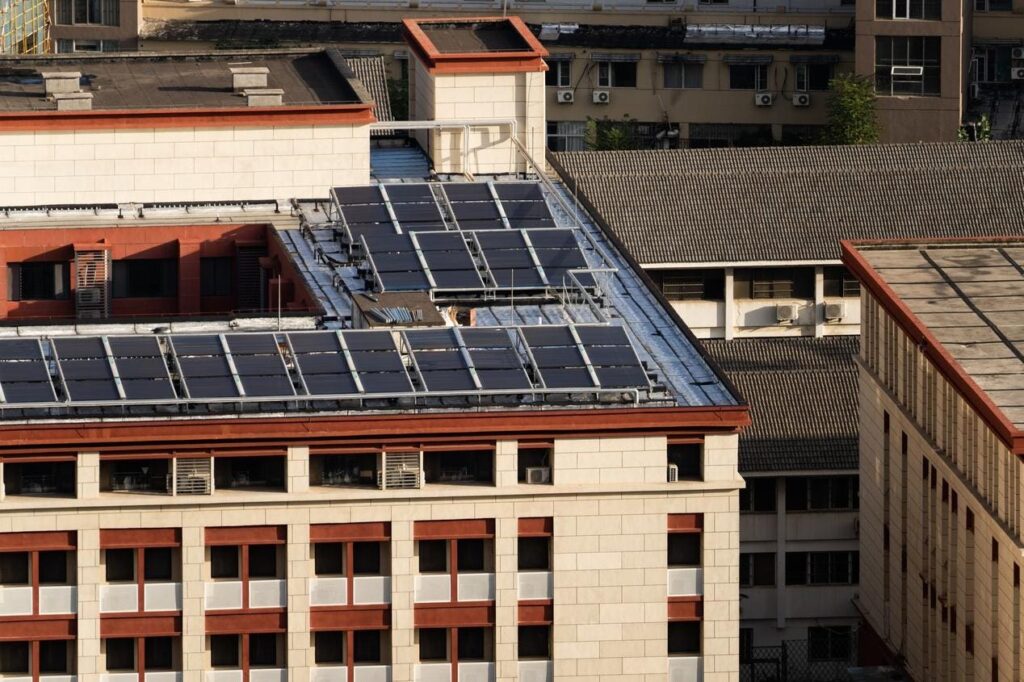Oliver Phillips, Chief Operator Officer and Lead Executive, Qmerit.
Over the past two decades, buildings and properties have undergone a shift toward LED-based lighting. Statista reports that by 2030, 87% of all global lighting sources will be LED. This will bring considerable cost and environmental benefits, as LED lights use 90% less electricity than their incandescent counterparts.
With LED projects approaching maturity, the next big idea with energy and facility management will be less about any one device and more about integrating devices and technologies into smart building systems.
Smart buildings use AI and the Internet of Things (IoT) to integrate lighting, heating/AC, security and access into a central platform. This creates a facility that is able to adjust energy use based on occupancy and changing operations. Smart buildings also deliver predictive maintenance by sensing when fixtures, parts and machines are encountering issues, thus reducing downtime and repair costs.
A survey by the JLL company, Building Engines and Building Owners and Managers Association International (BOMA), found that 55% of property professionals are “excited” or “interested” in AI. They said it would have the highest impact on “preventative maintenance/scheduling” and “optimized energy consumption.” Similarly, when asked about their priorities with technology, the top answer was “building operations/property maintenance,” with “energy management/sustainability” and “tenant experience” in a virtual tie for second.
As companies turn to smart-building initiatives, I recommend they ground their planning on three principles that will enable them to maximize the promise of smart-building technology.
Energy Optimization Projects That Feature Onsite Power
Property teams have every right to focus their AI and technology on optimizing energy. Data from the St. Louis Fed shows electricity prices increased about 35% over the past five years. This energy inflation train is unlikely to slow as data centers and EVs increase demand for electricity and as utilities lay out capital to shore up aging infrastructure.
Property professionals should, therefore, start viewing smart buildings as not just a way to reduce power consumption but as a means for producing it, too. Solar panels, wind turbines and battery storage components can be integrated to give the company its own source of clean energy to help power operations and provide backup during outages.
To get started, see if your local utility offers a net metering program that provides credits for the energy that your system produces. If so, your company has the means to reduce its monthly energy costs and even get paid for any excess sent to the utility. That may create a financial incentive to pursue a smart-building solution that includes renewables, and it will allow you to more accurately forecast your savings. Currently, the ITC provides a 30% tax credit on solar projects; it is subject to change with the new administration.
Alignment To The Company’s Fleet Program
Your company’s fleet program could augment your smart building initiative if it includes electric vehicles. For starters, the charging equipment can benefit from the predictive maintenance capabilities, potentially increasing uptime and lowering costs. More groundbreaking, the vehicles could be charged via the solar, wind and battery components discussed above. And as companies acquire more electric vehicles that come with bidirectional technology, they’ll be able to use the extra energy in the vehicle’s battery to run the enterprise, further strengthening independence from the grid and freedom from rising utility bills.
Property managers should, therefore, consider involving the company’s fleet department early in their smart-building planning to explore the areas for alignment, particularly as it relates to the electrical capacity needed to keep the vehicles charged.
Workforce Solutions That Bring Scale, Skill And Standardization
Given the severity of America’s electrical workforce shortage, companies will have a tough time finding workers to implement and support these and other smart-building activities. Particularly organizations with larger footprints, as they have to procure electrical contractors on a site-by-site basis, which increases risks related to contractor availability, competence and budget overruns.
Fortunately, and just within the last year, new labor platforms have come to the building and trade space that can sole-source the deployment of electrical workers on a regional or even national basis. Property teams can avoid the project management nightmare of identifying, vetting, hiring and overseeing multiple electrical contractors.
The first step in exploring a scaled workforce solution is to conduct an inventory of the electrical vendors serving the organization by company name, length of contract, rate/budget, type of work, location and performance metrics. This creates a baseline for assessing the benefits of consolidation and a starting point for issuing an RFP to firms that can deliver electrical services at scale. Hint: The more firms and job sites on your list, the more you stand to gain.
Conclusion
As property executives turn their spaces into smarter facilities, they should not only focus on the potential to reduce their energy consumption but also seize the opportunity to produce it as well. Such “prosumer” companies not only free themselves from utility bills but also become the sustainable, resilient organization that customers, employees and other stakeholders will look toward in the days ahead.
Forbes Business Council is the foremost growth and networking organization for business owners and leaders. Do I qualify?
Read the full article here

